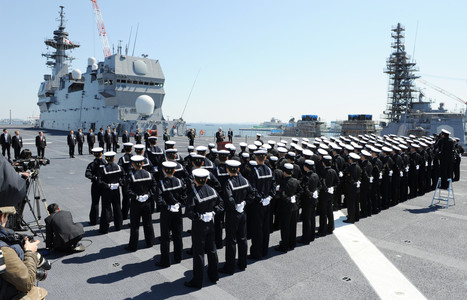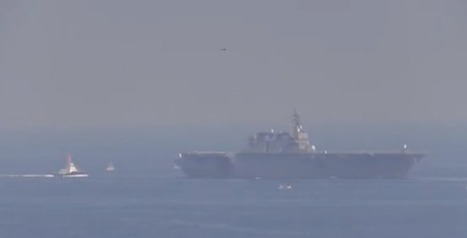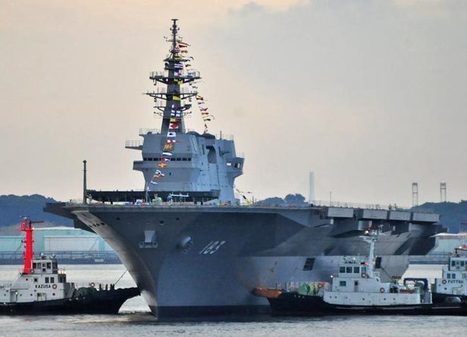YOKOHAMA: Japan's Maritime Self Defense Force on Wednesday took delivery of the biggest Japanese warship since World War Two, the Izumo, a helicopter carrier as big as the Imperial Navy aircraft carriers that battled the United States in the Pacific.
The Izumo with a crew of 470 sailors is a highly visible example of how Japan is expanding the capability of its military to operate overseas and enters service as Prime Minister Shinzo Abe seeks lawmaker approval to loosen the restraints of Japan's pacifist post-war constitution.
The 248 metre (813 feet) long Izumo resembles U.S. Marine Corp amphibious assault carriers in size and design but it is designated as a helicopter destroyer, a label that allows Japan to keep within the bounds of a constitutional ban on owning the means to wage war. Aircraft carriers, because of their ability to project force, are considered offensive weapons.
"The vessel can serve in a wide range of roles including peace keeping operations, international disaster relief and aid," Gen Nakatani, Japan's Minister of Defense said standing beside the vessel after a handover ceremony at the Japan United Marine shipyard in Yokohama.
"It also helps improve our ability to combat submarines.
Abe's moves to ease Japan's pacifist constitution and its build up in defence capabilities is unnerving neighbour China.
Japan is also adding longer-range patrol aircraft and military cargo planes to its defence capability, and buying Lockheed Martin F-35 fighter jets, amphibious assault vehicles and Boeing's Osprey troop carrier, which can operate from the Izumo.
The Izumo does not have a catapult necessary to launch fixed-wing fighters, but a planned vertical-take-off-and-landing (VTOL) variant of the F-35 could fly from the Izumo's flight deck.
Based at Yokosuka naval base near Tokyo, also the home port of the U.S. Seventh Fleets carrier battle group, the Izumo will join two smaller helicopters carriers already in service, that are also classed as destroyers.



 Your new post is loading...
Your new post is loading...









